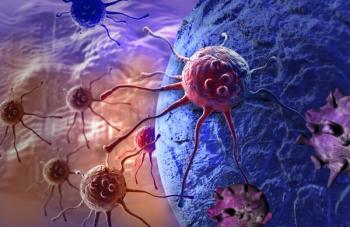
The number of people developing leptomeningeal disease is increasing for the same reason that diagnoses of brain metastases are on the rise: People are living longer, giving cancer more time to spread.

The number of people developing leptomeningeal disease is increasing for the same reason that diagnoses of brain metastases are on the rise: People are living longer, giving cancer more time to spread.

Better therapies are on the horizon for cancer that has spread to the brain, including a clinical trial that matches patients with treatments based on unique genetic changes in brain metastases.

When cancer treatments stop working, it is not the end of the line. Most patients with advanced disease will be on continuous therapy, and that means trying different options along the way.

Although being in a close relationship during the cancer journey can dramatically improve outcomes, the stress of treatment and the diagnosis itself can take a toll on couples, sometimes in a negative way.

When a patient’s disease stops responding, doctors can usually offer patients several options for a next treatment that will accommodate the patient’s needs and goals, or patients can consider a clinical trial.

Myeloma survivors, their loved ones and clinicians trekked up the Alaska-Kenai Peninsula to raise money and funds for the disease, offering one nurse the inspiration she needed after more than a year of the COVID-19 pandemic.

Oncologists are learning that cancer can be treated during pregnancy with relative safety in the second and third trimester.

More selective BTK inhibitors like Brukinsa may give patients with mantle cell lymphoma who progressed on prior therapies another option with potentially fewer and more manageable side effects.

Brain metastases are a pattern of spread we are seeing more for many tumor types as patients are living longer with metastatic cancer and we more readily use an array of brain imaging technologies when needed.

Detectable amounts of minimal residual disease after treatment for CLL does not mean that all hope is lost for survival without disease progression.